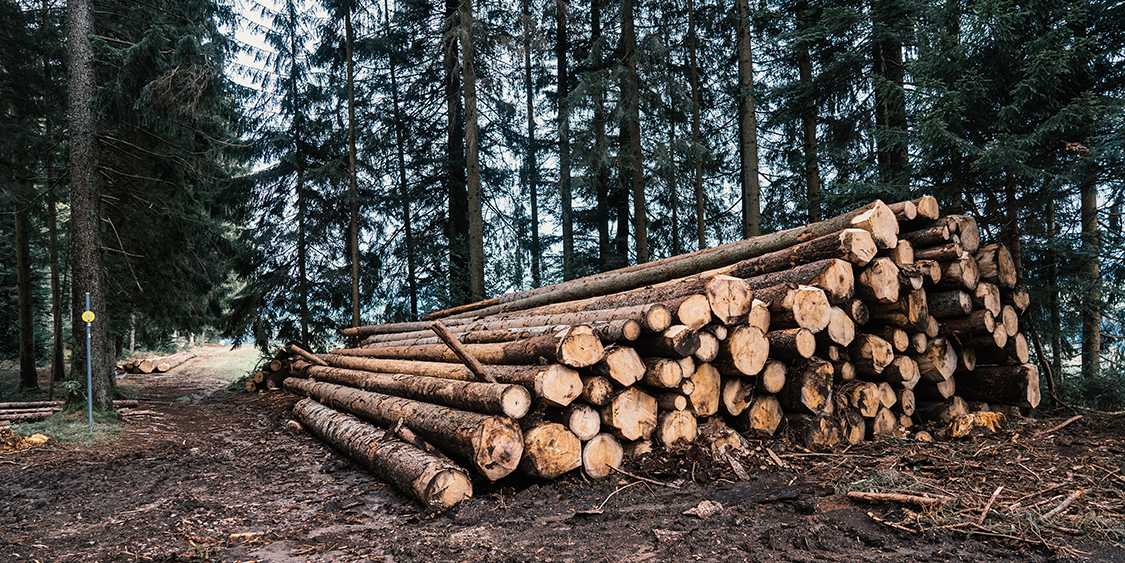
For those who run and operate a forestry or logging business, there are a number of exposures and risks to consider in order to mitigate losses and protect their business.
Here are some safety tips for employees to take into consideration to stay safe while working and minimize the number of accidents:
Manual Felling
- Make sure you and those around you have the correct PPE for the job.
- Scan the area for potential hazards that could complicate the felling.
- Investigate the tree itself for any abnormalities that could pose a hazard.
- Designate a fall area. Make sure the area is clear and provides the tree with an unobstructed path to the ground.
- Consider the shape of the tree and angle of the ground. Avoid felling a tree down a steep slope or to any other area that may cause it to move significantly after contacting the ground.
- Identify a safe retreat route that takes you back and away from the side of the tree at a 45-degree angle before making any cuts.
- Avoid potential kickbacks by never passing directly behind a falling tree
Limbing/Bucking
- Before beginning work, look for overhead hazards such as loose hanging limbs stuck in nearby trees that have yet to fall after the initial felling.
- If working on an incline, always work from the uphill side of the tree or log to prevent rolling or sliding.
- Use Tongue and Grove cuts to prevent the tree from rolling unexpectedly.
- Check for spring poles, branches or entire smaller trees pinned underneath a heavy object that may move suddenly when freed. To release a spring pole:
- Visualize an imaginary vertical line that comes straight up from the stump.
- Then visualize a horizontal line at the highest point of the bend.
- Come down at a 45-degree angle from where two lines intersect. This point is the middle of the bend.
- Shave or gradually cut away at the underside of the bend allowing the tension on the fibres to slowly release.
Explosives
- Only designated persons shall handle or use explosives.
- While transporting explosives, do not smoke or carry matches or other flame-producing products. Also, do not have firearms or loaded cartridges.
- Do not transport blasting caps in the same vehicle as the explosives.
- Do not have any matches or flame-producing materials in the area.
Yarding/Skidding
- No log should be moved until each employee is in the clear.
- Generally, chokers must be hooked and unhooked from the end of the log on the uphill side, but if the choker is hooked or unhooked from the downhill side, the log must be securely chocked to prevent movement.
- Towed equipment must be attached to each machine or vehicle in such a manner as to allow a full 90-degree turn of the equipment.
- Each employee must be in the clear, and the yarding machine operator must have clearly received and understood the signal to move the yarding line before logs or yarding lines are moved.
- Winching must be done within the stability limits of the machine.
- Each yarded tree must be placed in a location that does not create a hazard for an employee. This must be done in an orderly manner so the trees are stable before bucking or limbing is begun.
Log Loading/Transporting
- Only the machine operator and other essential personnel are allowed in the loading area. If a transport vehicle operator is allowed to remain in the vehicle cab while logs are carried or moved over the cab, the vehicle operator must be protected from falling logs by an effective means.
- Each tie-down must be left in place over the peak log until the unloading lines or stakes are put in place, and tie-downs must be released only from the side on which the unloading machine operates, unless the tie-down is released by remote control or the employee making the release is protected by rack, stanchions or other effective devices.
- Each stake or chock used to trip loads must be activated from the side opposite the release of the load.
- The transport vehicle must be positioned to provide working clearance between the vehicle and the deck.
Find out more:
Assessing your exposures and taking the appropriate precautions can go a long way toward protecting your business. Download our “Forestry and Logging Employee Safety Manual” guide for an in-depth list of more ways to minimize gaps in your risk management:




